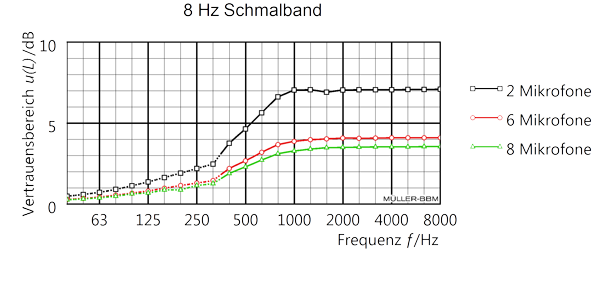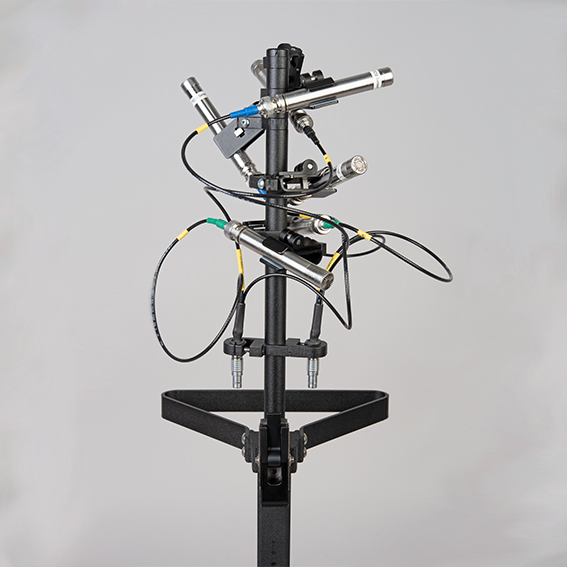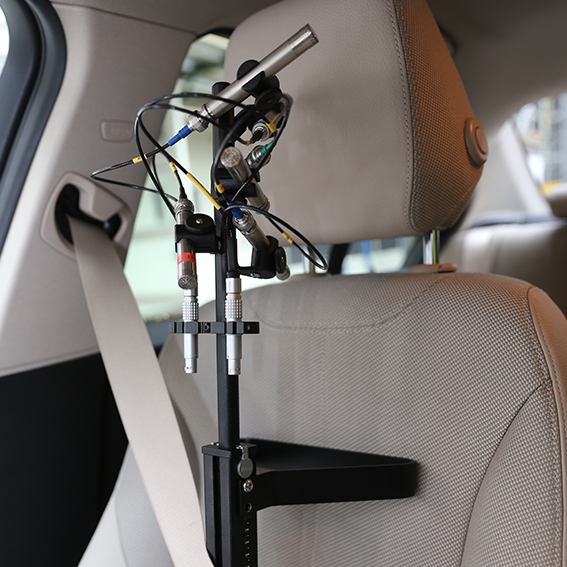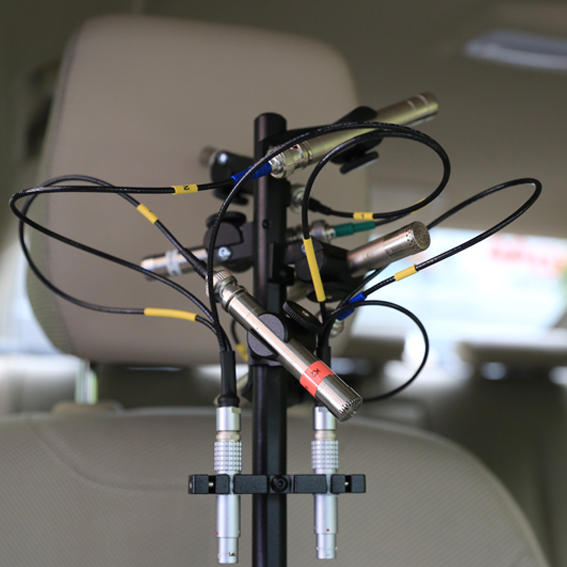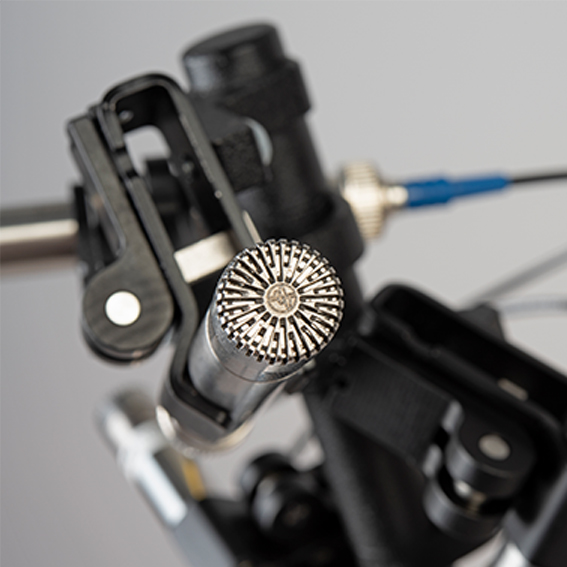Up to now, single microphones, microphone pairs, headset microphones or artificial heads have been used to measure the sound pressure in the area of the head positions in vehicles. The reproducibility of the measurement results proves to be extremely difficult in the medium and especially in the high-frequency range, since the measured sound pressure depends on the exact position of the microphone. The strong local dependency of the sound pressure results from the given properties of the sound field, which is characterized by the random crosstalk of many sound waves. In addition, there are deviations due to the selected seating position, the position of the backrest and the mounting of the microphones. The solution to this problem is called spatial averaging.
For this purpose, a special microphone array was developed that meets the special requirements in the vehicle and optimally positions as few independently acting microphones as possible. The volume covered by the individual microphones corresponds approximately to the range of possible ear positions of people of different sizes and their different head positions. The required number of microphones and their positions were optimized by correlation functions in the head area determined from vehicle measurements in order to ensure the lowest possible sound variance of measurements.
